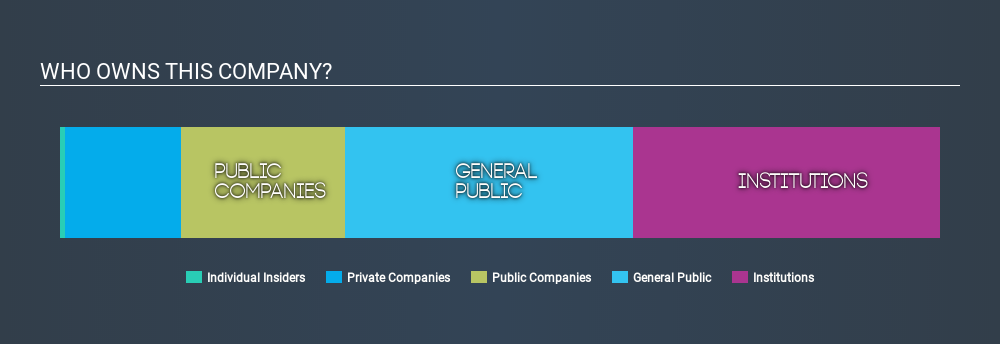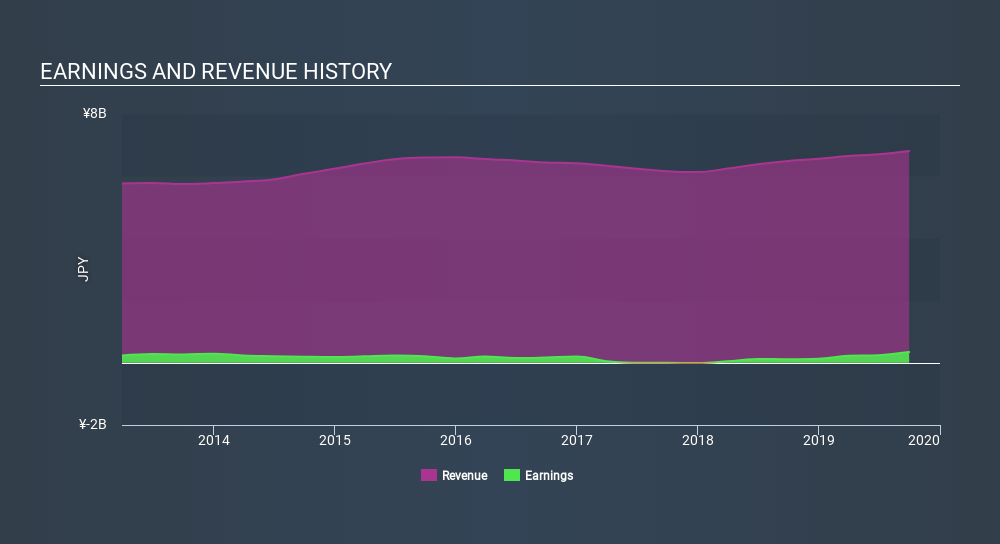If you want to know who really controls Nippon Pallet Pool Co., Ltd. (TYO:4690), then you’ll have to look at the makeup of its share registry. Institutions often own shares in more established companies, while it’s not unusual to see insiders own a fair bit of smaller companies. Companies that have been privatized tend to have low insider ownership.
Nippon Pallet Pool is not a large company by global standards. It has a market capitalization of JP¥2.8b, which means it wouldn’t have the attention of many institutional investors. In the chart below, we can see that institutional investors have bought into the company. Let’s take a closer look to see what the different types of shareholder can tell us about Nippon Pallet Pool.
View 4 warning signs we detected for Nippon Pallet Pool

What Does The Institutional Ownership Tell Us About Nippon Pallet Pool?
Many institutions measure their performance against an index that approximates the local market. So they usually pay more attention to companies that are included in major indices.
We can see that Nippon Pallet Pool does have institutional investors; and they hold 35% of the stock. This implies the analysts working for those institutions have looked at the stock and they like it. But just like anyone else, they could be wrong. If multiple institutions change their view on a stock at the same time, you could see the share price drop fast. It’s therefore worth looking at Nippon Pallet Pool’s earnings history, below. Of course, the future is what really matters.

Hedge funds don’t have many shares in Nippon Pallet Pool. Our data shows that Japan Freight Railway Company is the largest shareholder with 12% of shares outstanding. With 11% and 6.7% of the shares outstanding respectively, Nippon Express Co., Ltd. and Sumitomo Mitsui Financial Group Inc., Asset Management Arm are the second and third largest shareholders.
On further inspection, we found that 52% of the share register is owned by the top 8 shareholders, suggesting that the interests of the larger shareholders are balanced out to an extent by the smaller ones.
Researching institutional ownership is a good way to gauge and filter a stock’s expected performance. The same can be achieved by studying analyst sentiments. Our information suggests that there isn’t any analyst coverage of the stock, so it is probably little known.
Insider Ownership Of Nippon Pallet Pool
The definition of company insiders can be subjective, and does vary between jurisdictions. Our data reflects individual insiders, capturing board members at the very least. Management ultimately answers to the board. However, it is not uncommon for managers to be executive board members, especially if they are a founder or the CEO.
Insider ownership is positive when it signals leadership are thinking like the true owners of the company. However, high insider ownership can also give immense power to a small group within the company. This can be negative in some circumstances.
Our data suggests that insiders own under 1% of Nippon Pallet Pool Co., Ltd. in their own names. However, it’s possible that insiders might have an indirect interest through a more complex structure. It appears that the board holds about JP¥18m worth of stock. This compares to a market capitalization of JP¥2.8b. There’s no doubt that we learn useful information from looking at a company’s ownership structure and shareholders. However, there are many other factors to consider, such as the risks within the company itself. For example, we’ve discovered 4 warning signs for Nippon Pallet Pool (of which 1 is major) which any shareholder or potential investor should be aware of.
General Public Ownership
The general public holds a 33% stake in 4690. While this group can’t necessarily call the shots, it can certainly have a real influence on how the company is run.
Private Company Ownership
We can see that Private Companies own 13%, of the shares on issue. It might be worth looking deeper into this. If related parties, such as insiders, have an interest in one of these private companies, that should be disclosed in the annual report. Private companies may also have a strategic interest in the company.
Public Company Ownership
Public companies currently own 19% of 4690 stock. We can’t be certain, but this is quite possible this is a strategic stake. The businesses may be similar, or work together.
Next Steps:
While it is well worth considering the different groups that own a company, there are other factors that are even more important.
Many find it useful to take an in depth look at how a company has performed in the past. You can access this detailed graph of past earnings, revenue and cash flow.
Of course, you might find a fantastic investment by looking elsewhere. So take a peek at this free list of interesting companies.
NB: Figures in this article are calculated using data from the last twelve months, which refer to the 12-month period ending on the last date of the month the financial statement is dated. This may not be consistent with full year annual report figures.
If you spot an error that warrants correction, please contact the editor at [email protected]. This article by Simply Wall St is general in nature. It does not constitute a recommendation to buy or sell any stock, and does not take account of your objectives, or your financial situation. Simply Wall St has no position in the stocks mentioned.
We aim to bring you long-term focused research analysis driven by fundamental data. Note that our analysis may not factor in the latest price-sensitive company announcements or qualitative material. Thank you for reading.

These great dividend stocks are beating your savings account
Not only have these stocks been reliable dividend payers for the last 10 years but with the yield over 3% they are also easily beating your savings account (let alone the possible capital gains). Click here to see them for FREE on Simply Wall St.

